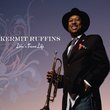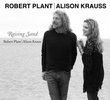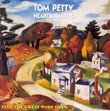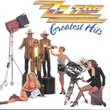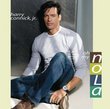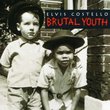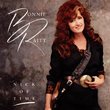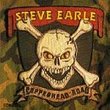| All Artists: Various Artists Title: Treme: Music From the HBO Original Series, Season 1 Members Wishing: 1 Total Copies: 0 Label: Geffen Records Original Release Date: 1/1/2010 Re-Release Date: 10/25/2010 Album Type: Soundtrack Genres: Pop, Soundtracks Style: Number of Discs: 1 SwapaCD Credits: 1 UPC: 602527508450 |
Search - Various Artists :: Treme: Music From the HBO Original Series, Season 1
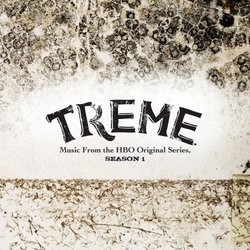 | Various Artists Treme: Music From the HBO Original Series, Season 1 Genres: Pop, Soundtracks
New Orleans-Bred Music From HBO® Series Treme? — TREME: MUSIC FROM THE HBO ORIGINAL SERIES, SEASON 1 — The HBO series Treme, named for the historic neighborhood where jazz was born, chronicles the rebuilding of a unique... more » |
Larger Image |
CD Details
Synopsis
Product Description
New Orleans-Bred Music From HBO® Series Treme?
TREME: MUSIC FROM THE HBO ORIGINAL SERIES, SEASON 1
The HBO series Treme, named for the historic neighborhood where jazz was born, chronicles the rebuilding of a unique American culture where music plays an integral role in the city's way of life. The show and soundtrack capture the sounds of many of New Orleans' extraordinary musicians and other artists. The soundtrack album includes 19 tracks featuring music heard throughout the groundbreaking series over the course of its first season, offering a cross-section of New Orleans-bred music including rhythm and blues, soul, jazz, rock and roll, funk, folk and country that reflects the diversity of the city's musical tradition. Artists heard on the soundtrack -- and seen in the series -- include John Boutté whose "Treme Song" is the series' theme. The Rebirth Brass Band's "Feel Like Funkin' It Up" reflects the melding of the city's brass band tradition with a contemporary funk cadence that exemplifies the musical melting post that is New Orleans. Steve Zahn who plays DJ/musician Davis McAlary in the series is heard performing "Shame, Shame, Shame" The album includes Dr. John's "Indian Red," as well as "Time Is On My Side" by Irma Thomas and Allen Toussaint plus Steve Earle's "This City" and much more music that evokes the tenor of the series and the spirit of New Orleans. David Simon, Treme co-creator and executive producer, noted, "In the course of filming Treme, we were treated to some remarkable performances - only a portion of which we could highlight in the series." He added, "Some great music ended up on the cutting room floor, so to speak." Among these are performances and music from Elvis Costello, Kermit Ruffins & The Barbecue Swingers, John Boutté, Glen David Andrews, Paul Sanchez & New Birth Brass Band, Pine Leaf Boys with Lucia Micarelli, John Mooney & Soul Rebels Brass Band and Irma Thomas, Dave Bartholomew, Allen Toussaint & Friends. Eric Overmyer, who co-created the series, provides introductory notes about filming the series on location in New Orleans. Jazz journalist Larry Blumenfeld's essay "Treme and the Abstract Truth" provides atmospheric liner notes that further underscore the relationship between the city and its music creators and practitioners. From David Simon and Eric Overmyer (both of The Wire®), Treme follows musicians, chefs, Mardi Gras Indians and ordinary New Orleanians as they try to rebuild their lives, their homes and their unique culture in the aftermath of Hurricane Katrina. The acclaimed show has been renewed for a second season which will air in 2011. The album was produced by Treme music supervisor Blake Leyh and Tony Seyler, Universal Music's Vice President for Film and Television Marketing; executive producers are David Simon, Eric Overmyer and Nina K. Noble, who along with the late David Mills produced the series for HBO. The Treme Live Video Performances were produced by Karen L. Thorson and the lead director is Anthony Hemingway. Complete, annotated audio track-listing follows.
1. TREME SONG (MAIN TITLE VERSION) - JOHN BOUTTÉ
The house in the 6th Ward where John Boutté wrote Treme Song in the summer of 2002 is gone, like so many others, in Katrina's wake. A few concrete steps and the remains of a porch stand on the spot where he first played the 1-3-5 bass line on his piano after watching a funeral sashay down the block. The song was used as end-credit music in the 2008 documentary "Faubourg Tremé: The Untold Story of Black New Orleans" before becoming the theme song for HBO's drama series.
2. FEEL LIKE FUNKIN' IT UP (LIVE STREET MIX) - REBIRTH BRASS BAND
Rebirth Brass Band formed in 1983, when the Frazier Brothers, sousaphonist Phil and bass drummer Keith, joined high school classmates, including Kermit Ruffins, to pursue an agenda of brass, funk, and traditional music. The members of Rebirth have remained at the forefront of the modern Brass Band movement in New Orleans ever since. This version of their best-known track was recorded live in the street for the pilot Episode of Treme. There are only a handful of well-documented commercial recordings of New Orleans brass music in its most comfortable setting - the street parade. Tom Dowd of Atlantic Records captured the Young Tuxedo Brass Band in November 1958 with remote recording equipment. Few others of that caliber come to mind. This recording of Rebirth Brass Band more than fifty years later makes the cut.
3. I HOPE YOU'RE COMIN' BACK TO NEW ORLEANS - THE NEW ORLEANS JAZZ VIPERS
The New Orleans Jazz Vipers are an exceptional Swing Era repertory group, but "I Hope You're Coming Back to New Orleans" is original music. Joe Braun wrote the song in late 2005, and it became an anthem for New Orleanians far and wide after Hurricane Katrina. "This is a new one dedicated to everybody who hasn't come home yet," Braun says in Episode 2. In fine New Orleans tradition, many of the musicians heard here re-appear in other bands later on: Jack Fine at the airport in Episode 6, St. Louis Slim in 9 with Washboard Chaz, Joe Braun at McAlary's house party, and Brett Richardson plays tambourine on the street with Annie during Creighton's final tour of Frenchmen St.
4. SKOKIAAN - KERMIT RUFFINS & THE BARBECUE SWINGERS
"Skokiaan" was written by August Musarurwa, a Shona musician from Southern Rhodesia (now Zimbabwe). In 1954, Musarurwa and the Bulawayo Sweet Rhythms Band released a version in South Africa, and it quickly spread to the United States. "Skokiaan" refers to a type of bootleg liquor, but folk singer Tom Glazer applied dubious English lyrics that stripped its original meaning and replaced it with a faux veneer of "African" exoticism. Louis Armstrong recorded "Skokiaan (South African Song)" in 1954 for Decca Records. Trumpeter Kermit Ruffins proudly claims the mantle of Armstrong acolyte. Ruffins and his group, the Barbecue Swingers, consistently entertain audiences with good-time music for the people. Ruffins originally recorded "Skokiaan" on his album, Big Easy, for Basin Street Records. This version from Episode 1 is a live performance captured on location at Vaughan's, a club in the Bywater section of New Orleans where Ruffins hosts a longstanding Thursday night engagement.
5. OOH POO PAH DOO - TROMBONE SHORTY & JAMES ANDREWS
Jessie Hill wrote this song and recorded it for Joe Banashak's Minit Records in 1959. Allen Toussaint was the producer. Hill had been an itinerant drummer, playing in Professor Longhair's band and with Huey "Piano" Smith and the Clowns. "Ooh Poo Pah Doo" won him brief fame, but it wasn't enough to sustain a career. Hill moved to Los Angeles to work with New Orleans experts Harold Battiste and Mac Rebennack. He wrote more than a hundred songs, some of which were recorded by Sonny and Cher and Aretha Franklin. Never did his songwriting strike gold like the multi-million seller, "Ooh Poo Pah Doo." Hill had connections to important New Orleans music families, the Nelsons and the Lasties. He is the grandfather of trumpeter James Andrews and Troy "Trombone Shorty" Andrews, who take the lead here on Hill's greatest hit. This version was performed live for a re-created Musician's Clinic airport gig in Episode 7.
6. DRINKA LITTLE POISON (4 U DIE) - SOUL REBELS BRASS BAND & JOHN MOONEY
The Soul Rebels have always been one of New Orleans' most stylistically adaptable brass bands, and from their formation in 1991 they incorporated influences as varied as reggae and hip-hop to create their fresh urban sound. When asked to perform this song which they didn't previously know, they took it in stride and worked with John Mooney to create one of the most unique and energetic musical performances of the season. John Mooney found an unlikely mentor in his hometown of Rochester, New York - blues legend Son House. Mooney settled in New Orleans, and he played with Earl King, Professor Longhair, and other blues royalty. He's got a killer instinct for the blues, including a righteous slide guitar technique and a voice that personifies conviction. His 2006 release, Big Ol' Fiya, features a cover of Grayson Capps' "Poison," its title adjusted to "Drinka Little Poison (4 U Die)." Mooney performs it live with the Soul Rebels for the season finale, Episode 10.
7. WE MADE IT THROUGH THAT WATER - FREE AGENTS BRASS BAND
"We Made It Through That Water" summarizes the story of the Free Agents Brass Band. The post-Katrina levee failure and subsequent inundation of New Orleans displaced many of the city's musicians. Brass players were scattered across the country. Drummer Ellis Joseph and trumpeter Shannon Haynes returned home as quickly as they could, assembled the available brass players and started hustling for gigs. Work was steady. There were plenty of funerals, but available housing was a crapshoot. The Free Agents Brass Band is so named because they have no affiliation with any of New Orleans' many social aid and pleasure clubs, organizations which typically act as benefactors to brass musicians who perform in second line parades. The Free Agents played their signature song at a second line in Episode 5.
8. SHAME SHAME SHAME - STEVE ZAHN AND FRIENDS
There are plenty of tough break tales in New Orleans, but the story of Smiley Lewis may be the unluckiest of all. Overton Amos Lemons grew up in the Irish Channel neighborhood in New Orleans. He played a little guitar, but his greatest gift was his voice. After some modest success on DeLuxe Records, Lewis made "Te-Na-Na," a regional hit in 1950 for Lew Chudd's Imperial Records. He recorded "Blue Monday" before Fats Domino, but Domino made it a national hit. Smiley's version of "I Hear You Knockin" proved to be the apex of his career, and even that was soon overshadowed by Gale Storm and Fats Domino covers of the same. "Shame Shame Shame" is one of Smiley's late 1950s sides for Imperial, and it's classic New Orleans-style rhythm and blues. It also works well as a thinly-veiled parody, as this rendition by Davis McAlary (played by actor Steve Zahn) from Episode 5 suggests. Kermit Ruffins plays the trumpet response originally performed by Dave Bartholomew, Smiley Lewis's session producer.
9. MY INDIAN RED - DR. JOHN
"My Indian Red" is one of the sacred songs of the Mardi Gras Indians, groups of African-Americans tribes that showcase their culture in the streets, dressed in elaborately hand-sewn suits. The song is typically sung for opening and closing processionals, as well as to mark the passing of a tribal chief. New Orleans griot Danny Barker recorded the first version in the 1950s, calling the names of various tribes - the Yellow Pocahontas, Monogram Hunters, White Eagles, Wild West Shoshone Hunters, and others. Dr. John made his own faithful reinterpretation of "My Indian Red" on his landmark recording, Goin' Back to New Orleans, for Warner Jazz. It featured some updated tribal associations, as well as solid horn charts from the "Creole Beethoven," arranger Wardell Quezergue. Dr. John performs this version during a rehearsal for a Lincoln Center Katrina benefit in New York during Episode 3.
10. AT THE FOOT OF CANAL STREET - JOHN BOUTTE, PAUL SANCHEZ, GLEN DAVID ANDREWS, & NEW BIRTH BRASS BAND
Call it poetic license. Most residents of New Orleans consider the foot of Canal Street to be the end closest to the Mississippi River. On the other side, Canal Street terminates near a vast collection of cemeteries. For John Boutte and Paul Sanchez, the reverse is true. Whatever the case, "At the Foot of Canal Street" puts the New Orleans tragicomic on display. The message is simple - Life is short. Enjoy it before it's over. John Boutte and Paul Sanchez have been a tandem songwriting team for more than a decade. Boutte is from a family of great singers. Sanchez is a prolific writer and former member of Cowboy Mouth. When the two met for an early collaboration, they talked about growing up in 1960s New Orleans. Race being the major difference (Boutte is black, Sanchez white), there were more striking similarities. Sanchez says, "We were born three days apart, both Scorpios which is scary, we were both raised in part by our sisters. I have five sisters and John has six. As we were walking and discussing these things, John pointed to a cemetery across the street and said, "You know what baby, my daddy's buried in that cemetery." I said, "That's one more thing we have in common, my daddy's buried across the street." He smiled at me and said, " You know baby, sooner or later, black or white, we all gonna meet at the foot of Canal Street. "This live version appeared in Episode 4.
11. BUONA SERA - LOUIS PRIMA
2010 marks the centennial year for Louis Prima, a Sicilian-American who grew up in the Treme neighborhood of New Orleans. Prima played the clown frequently, but he was a gifted musician. He wrote one of the definitive Swing Era classics, "Sing Sing Sing," popularized by Benny Goodman and Fletcher Henderson. "Buona Sera" was recorded in 1956, during the same sessions that produced "Jump, Jive, an' Wail" and "Just a Gigolo/I Ain't Got Nobody." It appears on the Capitol recording, The Wildest! This is Prima essentially making a document of his Las Vegas stage show from The Sahara Hotel and Casino. Keely Smith, his wife and showbiz partner, accompanies him, and Sam Butera belts a magnanimous tenor saxophone solo with his band, The Witnesses. "Buona Sera" plays in its entirety in Treme, during an otherwise silent montage of New Orleans at night in Episode 1.
12. NEW ORLEANS BLUES - TOM McDERMOTT & LUCIA MICARELLI
Tom McDermott is one of the piano masters in New Orleans. He has constructed a large piano repertoire based on New Orleans music and early jazz. McDermott's knowledge base includes the creole dance music that contributed to the development of jazz, or more broadly, the source code of New Orleans music - contradanzas, habaneras, choro, and ragtime. He can also play the rumba style of Professor Longhair, or the florid classical funk of pianist James Booker. Tom McDermott is especially in his element when performing Jelly Roll Morton's music. Lucia Micarelli had never played Jelly Roll Morton before taking the part of Annie, but as we can hear on this recording she now swings right along with the best. Morton was a crucial figure in early jazz as a composer, pianist, arranger and bandleader. He was born on Frenchmen St., which is still to this day an important place for the music of New Orleans, where past is always present. Morton recorded his solo version of "New Orleans Joys" for the famed Gennett Records in 1923 at the Starr Piano factory in Richmond, Indiana. The following year, he recorded it as a piano roll for Vocalstyle in Cincinnati, where he renamed it "New Orleans Blues." McDermott plays it as a duo with Annie (Lucia Micarelli) in Episode 3.
13. I DON'T STAND A GHOST OF A CHANCE WITH YOU -- MICHIEL HUISMAN, LUCIA MICARELLI, & WENDELL PIERCE
Victor Young wrote "I Don't Stand a Ghost of a Chance With You" in 1932, and Bing Crosby was the first to sing it. It has since been recorded by countless jazz artists - Chu Berry, Clifford Brown, Duke Ellington, Billie Holiday, and Thelonious Monk. Here, Antoine Batiste (Wendell Pierce) joins Sonny and Annie in the French Quarter for an impromptu croon during Episode 3. The song's title ominously foreshadows the following scene in which Batiste is beaten down by two stressed police officers.
14. INDIAN RED (Wild Man Memorial) - MARDI GRAS INDIANS
At the end of Episode 3, Big Chief Albert Lambreaux (Clarke Peters) leads members of remaining tribes in a memorial for his Wild Man. Traditionally, the Wild Man wears horns in his crown, and he protects the Chief from surging crowds. He is the buffer zone between the Flag Boy and the Chief. Lambreaux chants with real Mardi Gras Indian chiefs, including Daryl Montana of the Yellow Pocahontas Hunters, Otto DeJean of the 7th Ward Hard Head Hunters, Joseph Pierre "Monk" Boudreaux of the Golden Eagles, Clarence Dalcour of Creole Osceola, Lionel Delpit from the Black Feathers, Irvin Bannister of the Creole Wild West, and Council Chief Fred Johnson. There is also a representative from the real tribe from which Albert Lambreaux's fictional tribe derives its name. Cherice Harrison-Nelson is the Big Queen of The Guardians of the Flame, and she is the sister of saxophonist Donald Harrison, Jr.
15. INDIAN RED - DONALD HARRISON
The third and final version of "Indian Red" in Episode 3 functions as the music bed for end credits. Donald Harrison, Jr. is a veteran jazz saxophonist, but more central to this narrative, he is the Big Chief of the Congo Nation. He is also the son of the late Donald Harrison Sr., a well respected "Old Time Indian" and Big Chief of The Guardians of the Flame. Donald first recorded "Indian Red" on his 1992 Candid masterwork, Indian Blues. This is an updated take, and it is mindful of John Coltrane's devotional music, notably the "Psalm" section from A Love Supreme.
16.TIME IS ON MY SIDE - IRMA THOMAS & ALLEN TOUSSAINT
For decades, Irma Thomas has rightfully been named "The Soul Queen of New Orleans." No one else comes close. By all accounts, 1964 was a stellar year for Irma Thomas. One of her biggest chart successes came with "Wish Someone Would Care," followed by another minor hit, "Anyone Who Knows What Love Is." Oddly enough, the B-side of "Anyone Who Knows" was "Time is On My Side." When the Rolling Stones covered it, the blues ballad became an international sensation. Irma Thomas appears with Allen Toussaint, her early producer at Minit Records, for the Episode 10 finale. The special guest trumpeter is 89-year old Dave Bartholomew, the living legend of New Orleans rhythm and blues and its chief architect during the city's popular music heyday.
17. THIS CITY - STEVE EARLE
Steve Earle returns from a few turns in "The Wire" to play Harley, a troubadour and confidante to Annie. In Episode 10, Harley is working on a song. Armed with an acoustic guitar and a Woody Guthrie-styled message, "This Guitar Floats," he sings a snippet of "This City" with Annie near Jackson Square in the French Quarter. The fully realized song is the final statement to end the first season of Treme. Treme's music production team made a special effort to place songs in the series that followed the real timeline of late 2005-early 2006. "This City" is the lone exception to that rule. David Simon asked Steve Earle to write a new song that sounds as if it could have been composed in New Orleans shortly after Hurricane Katrina.
18. JUST A CLOSER WALK WITH THEE - TREME BRASS BAND
The Treme Brass Band is a marching outfit that plays the traditional New Orleans brass style. Snare drummer Benny Jones Sr. leads the band, and bass drummer Lionel Batiste - whose iconic visage graced one of this year's JazzFest posters (the other was Louis Prima) and is known to everyone in New Orleans as Uncle Lionel -- is the Assistant Leader. Near the end of Episode 1, the Treme Brass Band and members of the Sudan Social Aid and Pleasure Club perform a traditional New Orleans funeral. Just before Antoine Batiste joins the band in front of the church, he strikes up a brief conversation with the trumpeter, Bunchy. Truthfully, Bunchy Johnson was a drummer. Antoine asks how Bunchy is doing, and the response is so authentic: "I'm just trying to get from this world to the next." The real Bunchy Johnson died less than three weeks before Episode 1 aired.
19. MY DARLIN' NEW ORLEANS - LI'L QUEENIE & THE PERCOLATORS
In 1977, Leigh Harris formed a duo with musician John Magnie, a keyboardist who moved to New Orleans in 1974. They quickly added a bassist, drummer, and horn player to create The Percolators, a band named after a quote in jazz reedman Mezz Mezzrow's autobiography. The Percolators were a highly successful local band, one that incorporated elements of jazz, blues, and rock. Despite their talents, Lil Queenie and the Percolators received little attention beyond New Orleans, and when they disbanded after four years their only release had been a 45rpm recording of their signature tune, "My Darlin' New Orleans." It appears during the end titles for Episode 1.
TREME: MUSIC FROM THE HBO ORIGINAL SERIES, SEASON 1
The HBO series Treme, named for the historic neighborhood where jazz was born, chronicles the rebuilding of a unique American culture where music plays an integral role in the city's way of life. The show and soundtrack capture the sounds of many of New Orleans' extraordinary musicians and other artists. The soundtrack album includes 19 tracks featuring music heard throughout the groundbreaking series over the course of its first season, offering a cross-section of New Orleans-bred music including rhythm and blues, soul, jazz, rock and roll, funk, folk and country that reflects the diversity of the city's musical tradition. Artists heard on the soundtrack -- and seen in the series -- include John Boutté whose "Treme Song" is the series' theme. The Rebirth Brass Band's "Feel Like Funkin' It Up" reflects the melding of the city's brass band tradition with a contemporary funk cadence that exemplifies the musical melting post that is New Orleans. Steve Zahn who plays DJ/musician Davis McAlary in the series is heard performing "Shame, Shame, Shame" The album includes Dr. John's "Indian Red," as well as "Time Is On My Side" by Irma Thomas and Allen Toussaint plus Steve Earle's "This City" and much more music that evokes the tenor of the series and the spirit of New Orleans. David Simon, Treme co-creator and executive producer, noted, "In the course of filming Treme, we were treated to some remarkable performances - only a portion of which we could highlight in the series." He added, "Some great music ended up on the cutting room floor, so to speak." Among these are performances and music from Elvis Costello, Kermit Ruffins & The Barbecue Swingers, John Boutté, Glen David Andrews, Paul Sanchez & New Birth Brass Band, Pine Leaf Boys with Lucia Micarelli, John Mooney & Soul Rebels Brass Band and Irma Thomas, Dave Bartholomew, Allen Toussaint & Friends. Eric Overmyer, who co-created the series, provides introductory notes about filming the series on location in New Orleans. Jazz journalist Larry Blumenfeld's essay "Treme and the Abstract Truth" provides atmospheric liner notes that further underscore the relationship between the city and its music creators and practitioners. From David Simon and Eric Overmyer (both of The Wire®), Treme follows musicians, chefs, Mardi Gras Indians and ordinary New Orleanians as they try to rebuild their lives, their homes and their unique culture in the aftermath of Hurricane Katrina. The acclaimed show has been renewed for a second season which will air in 2011. The album was produced by Treme music supervisor Blake Leyh and Tony Seyler, Universal Music's Vice President for Film and Television Marketing; executive producers are David Simon, Eric Overmyer and Nina K. Noble, who along with the late David Mills produced the series for HBO. The Treme Live Video Performances were produced by Karen L. Thorson and the lead director is Anthony Hemingway. Complete, annotated audio track-listing follows.
1. TREME SONG (MAIN TITLE VERSION) - JOHN BOUTTÉ
The house in the 6th Ward where John Boutté wrote Treme Song in the summer of 2002 is gone, like so many others, in Katrina's wake. A few concrete steps and the remains of a porch stand on the spot where he first played the 1-3-5 bass line on his piano after watching a funeral sashay down the block. The song was used as end-credit music in the 2008 documentary "Faubourg Tremé: The Untold Story of Black New Orleans" before becoming the theme song for HBO's drama series.
2. FEEL LIKE FUNKIN' IT UP (LIVE STREET MIX) - REBIRTH BRASS BAND
Rebirth Brass Band formed in 1983, when the Frazier Brothers, sousaphonist Phil and bass drummer Keith, joined high school classmates, including Kermit Ruffins, to pursue an agenda of brass, funk, and traditional music. The members of Rebirth have remained at the forefront of the modern Brass Band movement in New Orleans ever since. This version of their best-known track was recorded live in the street for the pilot Episode of Treme. There are only a handful of well-documented commercial recordings of New Orleans brass music in its most comfortable setting - the street parade. Tom Dowd of Atlantic Records captured the Young Tuxedo Brass Band in November 1958 with remote recording equipment. Few others of that caliber come to mind. This recording of Rebirth Brass Band more than fifty years later makes the cut.
3. I HOPE YOU'RE COMIN' BACK TO NEW ORLEANS - THE NEW ORLEANS JAZZ VIPERS
The New Orleans Jazz Vipers are an exceptional Swing Era repertory group, but "I Hope You're Coming Back to New Orleans" is original music. Joe Braun wrote the song in late 2005, and it became an anthem for New Orleanians far and wide after Hurricane Katrina. "This is a new one dedicated to everybody who hasn't come home yet," Braun says in Episode 2. In fine New Orleans tradition, many of the musicians heard here re-appear in other bands later on: Jack Fine at the airport in Episode 6, St. Louis Slim in 9 with Washboard Chaz, Joe Braun at McAlary's house party, and Brett Richardson plays tambourine on the street with Annie during Creighton's final tour of Frenchmen St.
4. SKOKIAAN - KERMIT RUFFINS & THE BARBECUE SWINGERS
"Skokiaan" was written by August Musarurwa, a Shona musician from Southern Rhodesia (now Zimbabwe). In 1954, Musarurwa and the Bulawayo Sweet Rhythms Band released a version in South Africa, and it quickly spread to the United States. "Skokiaan" refers to a type of bootleg liquor, but folk singer Tom Glazer applied dubious English lyrics that stripped its original meaning and replaced it with a faux veneer of "African" exoticism. Louis Armstrong recorded "Skokiaan (South African Song)" in 1954 for Decca Records. Trumpeter Kermit Ruffins proudly claims the mantle of Armstrong acolyte. Ruffins and his group, the Barbecue Swingers, consistently entertain audiences with good-time music for the people. Ruffins originally recorded "Skokiaan" on his album, Big Easy, for Basin Street Records. This version from Episode 1 is a live performance captured on location at Vaughan's, a club in the Bywater section of New Orleans where Ruffins hosts a longstanding Thursday night engagement.
5. OOH POO PAH DOO - TROMBONE SHORTY & JAMES ANDREWS
Jessie Hill wrote this song and recorded it for Joe Banashak's Minit Records in 1959. Allen Toussaint was the producer. Hill had been an itinerant drummer, playing in Professor Longhair's band and with Huey "Piano" Smith and the Clowns. "Ooh Poo Pah Doo" won him brief fame, but it wasn't enough to sustain a career. Hill moved to Los Angeles to work with New Orleans experts Harold Battiste and Mac Rebennack. He wrote more than a hundred songs, some of which were recorded by Sonny and Cher and Aretha Franklin. Never did his songwriting strike gold like the multi-million seller, "Ooh Poo Pah Doo." Hill had connections to important New Orleans music families, the Nelsons and the Lasties. He is the grandfather of trumpeter James Andrews and Troy "Trombone Shorty" Andrews, who take the lead here on Hill's greatest hit. This version was performed live for a re-created Musician's Clinic airport gig in Episode 7.
6. DRINKA LITTLE POISON (4 U DIE) - SOUL REBELS BRASS BAND & JOHN MOONEY
The Soul Rebels have always been one of New Orleans' most stylistically adaptable brass bands, and from their formation in 1991 they incorporated influences as varied as reggae and hip-hop to create their fresh urban sound. When asked to perform this song which they didn't previously know, they took it in stride and worked with John Mooney to create one of the most unique and energetic musical performances of the season. John Mooney found an unlikely mentor in his hometown of Rochester, New York - blues legend Son House. Mooney settled in New Orleans, and he played with Earl King, Professor Longhair, and other blues royalty. He's got a killer instinct for the blues, including a righteous slide guitar technique and a voice that personifies conviction. His 2006 release, Big Ol' Fiya, features a cover of Grayson Capps' "Poison," its title adjusted to "Drinka Little Poison (4 U Die)." Mooney performs it live with the Soul Rebels for the season finale, Episode 10.
7. WE MADE IT THROUGH THAT WATER - FREE AGENTS BRASS BAND
"We Made It Through That Water" summarizes the story of the Free Agents Brass Band. The post-Katrina levee failure and subsequent inundation of New Orleans displaced many of the city's musicians. Brass players were scattered across the country. Drummer Ellis Joseph and trumpeter Shannon Haynes returned home as quickly as they could, assembled the available brass players and started hustling for gigs. Work was steady. There were plenty of funerals, but available housing was a crapshoot. The Free Agents Brass Band is so named because they have no affiliation with any of New Orleans' many social aid and pleasure clubs, organizations which typically act as benefactors to brass musicians who perform in second line parades. The Free Agents played their signature song at a second line in Episode 5.
8. SHAME SHAME SHAME - STEVE ZAHN AND FRIENDS
There are plenty of tough break tales in New Orleans, but the story of Smiley Lewis may be the unluckiest of all. Overton Amos Lemons grew up in the Irish Channel neighborhood in New Orleans. He played a little guitar, but his greatest gift was his voice. After some modest success on DeLuxe Records, Lewis made "Te-Na-Na," a regional hit in 1950 for Lew Chudd's Imperial Records. He recorded "Blue Monday" before Fats Domino, but Domino made it a national hit. Smiley's version of "I Hear You Knockin" proved to be the apex of his career, and even that was soon overshadowed by Gale Storm and Fats Domino covers of the same. "Shame Shame Shame" is one of Smiley's late 1950s sides for Imperial, and it's classic New Orleans-style rhythm and blues. It also works well as a thinly-veiled parody, as this rendition by Davis McAlary (played by actor Steve Zahn) from Episode 5 suggests. Kermit Ruffins plays the trumpet response originally performed by Dave Bartholomew, Smiley Lewis's session producer.
9. MY INDIAN RED - DR. JOHN
"My Indian Red" is one of the sacred songs of the Mardi Gras Indians, groups of African-Americans tribes that showcase their culture in the streets, dressed in elaborately hand-sewn suits. The song is typically sung for opening and closing processionals, as well as to mark the passing of a tribal chief. New Orleans griot Danny Barker recorded the first version in the 1950s, calling the names of various tribes - the Yellow Pocahontas, Monogram Hunters, White Eagles, Wild West Shoshone Hunters, and others. Dr. John made his own faithful reinterpretation of "My Indian Red" on his landmark recording, Goin' Back to New Orleans, for Warner Jazz. It featured some updated tribal associations, as well as solid horn charts from the "Creole Beethoven," arranger Wardell Quezergue. Dr. John performs this version during a rehearsal for a Lincoln Center Katrina benefit in New York during Episode 3.
10. AT THE FOOT OF CANAL STREET - JOHN BOUTTE, PAUL SANCHEZ, GLEN DAVID ANDREWS, & NEW BIRTH BRASS BAND
Call it poetic license. Most residents of New Orleans consider the foot of Canal Street to be the end closest to the Mississippi River. On the other side, Canal Street terminates near a vast collection of cemeteries. For John Boutte and Paul Sanchez, the reverse is true. Whatever the case, "At the Foot of Canal Street" puts the New Orleans tragicomic on display. The message is simple - Life is short. Enjoy it before it's over. John Boutte and Paul Sanchez have been a tandem songwriting team for more than a decade. Boutte is from a family of great singers. Sanchez is a prolific writer and former member of Cowboy Mouth. When the two met for an early collaboration, they talked about growing up in 1960s New Orleans. Race being the major difference (Boutte is black, Sanchez white), there were more striking similarities. Sanchez says, "We were born three days apart, both Scorpios which is scary, we were both raised in part by our sisters. I have five sisters and John has six. As we were walking and discussing these things, John pointed to a cemetery across the street and said, "You know what baby, my daddy's buried in that cemetery." I said, "That's one more thing we have in common, my daddy's buried across the street." He smiled at me and said, " You know baby, sooner or later, black or white, we all gonna meet at the foot of Canal Street. "This live version appeared in Episode 4.
11. BUONA SERA - LOUIS PRIMA
2010 marks the centennial year for Louis Prima, a Sicilian-American who grew up in the Treme neighborhood of New Orleans. Prima played the clown frequently, but he was a gifted musician. He wrote one of the definitive Swing Era classics, "Sing Sing Sing," popularized by Benny Goodman and Fletcher Henderson. "Buona Sera" was recorded in 1956, during the same sessions that produced "Jump, Jive, an' Wail" and "Just a Gigolo/I Ain't Got Nobody." It appears on the Capitol recording, The Wildest! This is Prima essentially making a document of his Las Vegas stage show from The Sahara Hotel and Casino. Keely Smith, his wife and showbiz partner, accompanies him, and Sam Butera belts a magnanimous tenor saxophone solo with his band, The Witnesses. "Buona Sera" plays in its entirety in Treme, during an otherwise silent montage of New Orleans at night in Episode 1.
12. NEW ORLEANS BLUES - TOM McDERMOTT & LUCIA MICARELLI
Tom McDermott is one of the piano masters in New Orleans. He has constructed a large piano repertoire based on New Orleans music and early jazz. McDermott's knowledge base includes the creole dance music that contributed to the development of jazz, or more broadly, the source code of New Orleans music - contradanzas, habaneras, choro, and ragtime. He can also play the rumba style of Professor Longhair, or the florid classical funk of pianist James Booker. Tom McDermott is especially in his element when performing Jelly Roll Morton's music. Lucia Micarelli had never played Jelly Roll Morton before taking the part of Annie, but as we can hear on this recording she now swings right along with the best. Morton was a crucial figure in early jazz as a composer, pianist, arranger and bandleader. He was born on Frenchmen St., which is still to this day an important place for the music of New Orleans, where past is always present. Morton recorded his solo version of "New Orleans Joys" for the famed Gennett Records in 1923 at the Starr Piano factory in Richmond, Indiana. The following year, he recorded it as a piano roll for Vocalstyle in Cincinnati, where he renamed it "New Orleans Blues." McDermott plays it as a duo with Annie (Lucia Micarelli) in Episode 3.
13. I DON'T STAND A GHOST OF A CHANCE WITH YOU -- MICHIEL HUISMAN, LUCIA MICARELLI, & WENDELL PIERCE
Victor Young wrote "I Don't Stand a Ghost of a Chance With You" in 1932, and Bing Crosby was the first to sing it. It has since been recorded by countless jazz artists - Chu Berry, Clifford Brown, Duke Ellington, Billie Holiday, and Thelonious Monk. Here, Antoine Batiste (Wendell Pierce) joins Sonny and Annie in the French Quarter for an impromptu croon during Episode 3. The song's title ominously foreshadows the following scene in which Batiste is beaten down by two stressed police officers.
14. INDIAN RED (Wild Man Memorial) - MARDI GRAS INDIANS
At the end of Episode 3, Big Chief Albert Lambreaux (Clarke Peters) leads members of remaining tribes in a memorial for his Wild Man. Traditionally, the Wild Man wears horns in his crown, and he protects the Chief from surging crowds. He is the buffer zone between the Flag Boy and the Chief. Lambreaux chants with real Mardi Gras Indian chiefs, including Daryl Montana of the Yellow Pocahontas Hunters, Otto DeJean of the 7th Ward Hard Head Hunters, Joseph Pierre "Monk" Boudreaux of the Golden Eagles, Clarence Dalcour of Creole Osceola, Lionel Delpit from the Black Feathers, Irvin Bannister of the Creole Wild West, and Council Chief Fred Johnson. There is also a representative from the real tribe from which Albert Lambreaux's fictional tribe derives its name. Cherice Harrison-Nelson is the Big Queen of The Guardians of the Flame, and she is the sister of saxophonist Donald Harrison, Jr.
15. INDIAN RED - DONALD HARRISON
The third and final version of "Indian Red" in Episode 3 functions as the music bed for end credits. Donald Harrison, Jr. is a veteran jazz saxophonist, but more central to this narrative, he is the Big Chief of the Congo Nation. He is also the son of the late Donald Harrison Sr., a well respected "Old Time Indian" and Big Chief of The Guardians of the Flame. Donald first recorded "Indian Red" on his 1992 Candid masterwork, Indian Blues. This is an updated take, and it is mindful of John Coltrane's devotional music, notably the "Psalm" section from A Love Supreme.
16.TIME IS ON MY SIDE - IRMA THOMAS & ALLEN TOUSSAINT
For decades, Irma Thomas has rightfully been named "The Soul Queen of New Orleans." No one else comes close. By all accounts, 1964 was a stellar year for Irma Thomas. One of her biggest chart successes came with "Wish Someone Would Care," followed by another minor hit, "Anyone Who Knows What Love Is." Oddly enough, the B-side of "Anyone Who Knows" was "Time is On My Side." When the Rolling Stones covered it, the blues ballad became an international sensation. Irma Thomas appears with Allen Toussaint, her early producer at Minit Records, for the Episode 10 finale. The special guest trumpeter is 89-year old Dave Bartholomew, the living legend of New Orleans rhythm and blues and its chief architect during the city's popular music heyday.
17. THIS CITY - STEVE EARLE
Steve Earle returns from a few turns in "The Wire" to play Harley, a troubadour and confidante to Annie. In Episode 10, Harley is working on a song. Armed with an acoustic guitar and a Woody Guthrie-styled message, "This Guitar Floats," he sings a snippet of "This City" with Annie near Jackson Square in the French Quarter. The fully realized song is the final statement to end the first season of Treme. Treme's music production team made a special effort to place songs in the series that followed the real timeline of late 2005-early 2006. "This City" is the lone exception to that rule. David Simon asked Steve Earle to write a new song that sounds as if it could have been composed in New Orleans shortly after Hurricane Katrina.
18. JUST A CLOSER WALK WITH THEE - TREME BRASS BAND
The Treme Brass Band is a marching outfit that plays the traditional New Orleans brass style. Snare drummer Benny Jones Sr. leads the band, and bass drummer Lionel Batiste - whose iconic visage graced one of this year's JazzFest posters (the other was Louis Prima) and is known to everyone in New Orleans as Uncle Lionel -- is the Assistant Leader. Near the end of Episode 1, the Treme Brass Band and members of the Sudan Social Aid and Pleasure Club perform a traditional New Orleans funeral. Just before Antoine Batiste joins the band in front of the church, he strikes up a brief conversation with the trumpeter, Bunchy. Truthfully, Bunchy Johnson was a drummer. Antoine asks how Bunchy is doing, and the response is so authentic: "I'm just trying to get from this world to the next." The real Bunchy Johnson died less than three weeks before Episode 1 aired.
19. MY DARLIN' NEW ORLEANS - LI'L QUEENIE & THE PERCOLATORS
In 1977, Leigh Harris formed a duo with musician John Magnie, a keyboardist who moved to New Orleans in 1974. They quickly added a bassist, drummer, and horn player to create The Percolators, a band named after a quote in jazz reedman Mezz Mezzrow's autobiography. The Percolators were a highly successful local band, one that incorporated elements of jazz, blues, and rock. Despite their talents, Lil Queenie and the Percolators received little attention beyond New Orleans, and when they disbanded after four years their only release had been a 45rpm recording of their signature tune, "My Darlin' New Orleans." It appears during the end titles for Episode 1.
Similar CDs
| Kermit Ruffins Livin' A Treme Life Genres: Jazz, Pop Label: Basin Street Records | |
| Eric Clapton Clapton Genres: Rock, Classic Rock Label: Reprise | |
Similarly Requested CDs
| Robert Plant and Alison Krauss, Robert Plant, Alison Krauss Raising Sand Genres: Country, Folk, Pop Label: Rounder | |
| Tom Petty & Heartbreakers Into the Great Wide Open Genres: Pop, Rock, Classic Rock Label: Mca | |
| Zz Top Greatest Hits Genres: Pop, Rock, Classic Rock, Metal Label: Warner Bros. | |
| Harry Connick Jr. Oh, My Nola Genres: Jazz, Pop, R&B, Broadway & Vocalists Label: Sony | |
| Phil Collins No Jacket Required Genres: Pop, Rock Label: Atlantic / Wea | |
| Elvis Costello Brutal Youth Genres: Alternative Rock, Folk, Pop, Rock Label: Warner Bros UK | |
| Bruce Springsteen Tunnel of Love Genres: Pop, Rock, Classic Rock Label: Sony | |
| Bonnie Raitt Nick of Time Genres: Blues, Folk, Pop, Rock, Classic Rock Label: Capitol | |
| Steve Earle Copperhead Road Genres: Country, Folk, Pop, Rock Label: Mca | |

 Track Listings (19) - Disc #1
Track Listings (19) - Disc #1